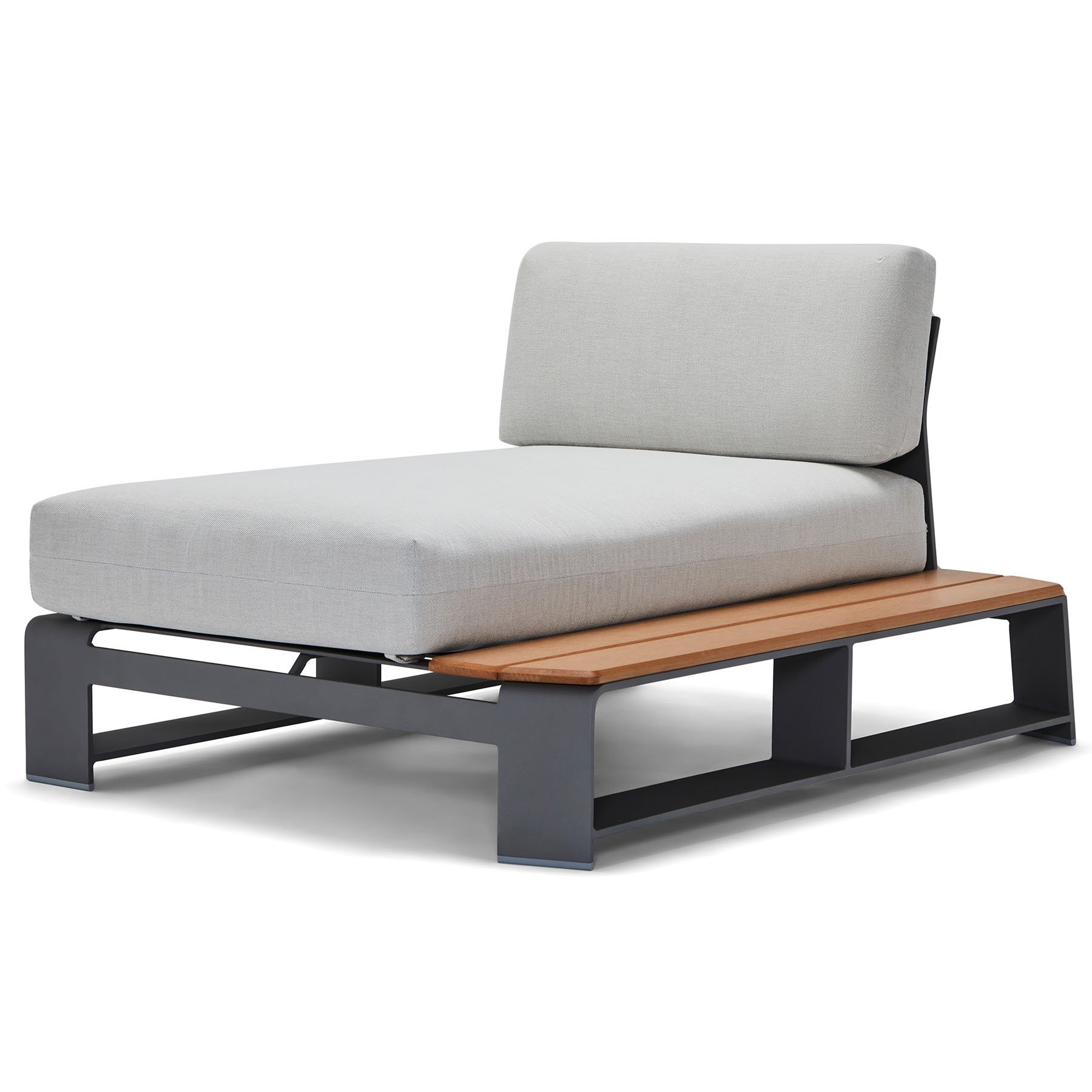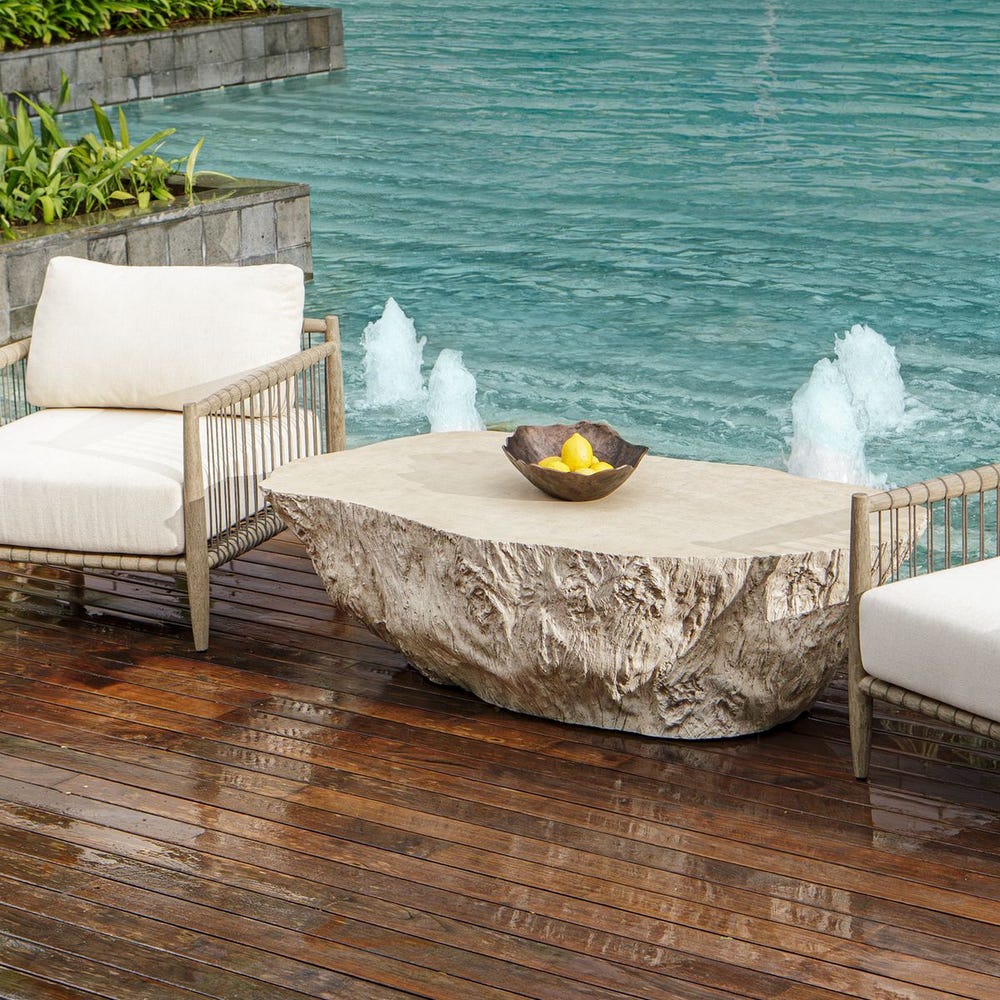In the world of outdoor interior design, durability, aesthetics, and comfort must work hand-in-hand. As homeowners increasingly view patios, porches, and garden spaces as extensions of their interiors, the materials and colors used in outdoor furnishings and design are evolving. When choosing long-lasting patio pieces, Durawood furniture is quickly becoming the gold standard. Choosing the right materials is essential not only for style but also for enduring the elements. Let’s explore the rise of Durawood as a superior alternative to Polywood, the innovative use of lightweight concrete for texture, and how neutral tones and pops of color can define and elevate your outdoor space.
Durawood vs. Polywood: The Battle of Synthetic Woods. When it comes to synthetic wood used in outdoor furniture, two names often surface: Polywood and Durawood. While both are engineered to withstand the rigors of sun, rain, salt air, and wear, their composition and performance set them apart.
Polywood, made from high-density polyethylene (HDPE) sourced primarily from recycled plastic containers like milk jugs, is popular for its eco-friendly appeal. It resists moisture, won’t rot, and is easy to clean. However, over time, Polywood furniture can feel overly plastic in both texture and weight, and it may become brittle after prolonged UV exposure.
Durawood, on the other hand, has emerged as a stronger, more refined alternative. While also made from HDPE, Durawood is denser and more structurally sound. Unlike plastic-like alternatives, Durawood furniture offers a realistic wood feel. Its manufacturing process results in a product that more closely mimics the grain, warmth, and weight of real wood—without sacrificing the zero-maintenance quality consumers want. Durawood resists fading, doesn’t crack or warp, and holds up impressively even in extreme climates. It’s the better choice for homeowners seeking a premium outdoor aesthetic with long-term value.
In terms of construction, furniture made with Durawood tends to feature hidden fasteners and refined joinery, giving it a more finished, furniture-like appearance. Polywood, though functional, often lacks this level of craftsmanship.
Now let’s look at another popular material light weight concrete. You can leverage texture and strength with lightweight concrete. While wood-alternative materials form the backbone of outdoor furniture, lightweight concrete is gaining popularity for adding tactile contrast and visual depth. Traditionally associated with urban or industrial design, concrete has been reimagined for the outdoors, now coming in smoother, lighter forms that are easy to move but retain the grounded, organic feel that only concrete can provide.
Lightweight concrete tables, planters, and fire pits bring a sculptural element to patios and courtyards. They serve as both focal points and functional pieces—particularly when mixed with wood, woven textures, or greenery. Unlike heavier, traditional concrete, these new formulations resist cracking and staining, offering durability along with mobility.
In minimalist or coastal-style designs, concrete works beautifully to anchor the space. Its cool, matte surface contrasts with the warmth of wood or Durawood and complements outdoor textiles, especially in natural colors like sand, fog, or stone gray.
Now that you have a feel for the materials to use, lets look at what colors should be utilized. I recommend using neutrals to define a calm space with cohesion. Neutrals form the foundation of good outdoor design, offering a sense of calm and timelessness. In outdoor spaces, where plants and sky bring their own shifting colors, a neutral base allows the surroundings to shine. Soft grays, sandy taupes, creamy whites, and weathered browns all help to unify an outdoor area. When used on cushions, rugs, umbrellas, and furniture frames, these colors establish a clean, peaceful palette. They also reflect sunlight better, helping keep surfaces cooler during the hot months.
Neutral colors are essential for creating a seamless transition from indoors to outdoors—especially in open-plan homes where the patio feels like an extension of the living room. By keeping major pieces like sectionals or dining sets in muted tones, you create a flexible canvas that can be styled differently each season.
Use pops of color to personalize your outdoor style. Once the neutral base is in place, color becomes the tool for storytelling. Outdoor pillows, planters, lanterns, and even painted accent furniture can inject life into the space. In tropical or coastal settings, teal, turquoise, coral, and seafoam evoke the surrounding waters and skies. In a more modern garden space, rust, charcoal, mustard, or deep green can ground the design while staying on-trend. Seasonal changes also provide the perfect excuse to rotate in fresh colorways—bright citrus for summer, rich burgundy for fall. When working with color, moderation is key. Choose two or three accent colors and repeat them across different elements—pillows, rugs, flower pots, or serving trays—to maintain cohesion. Bright colors should accent the space, not overwhelm it. Outdoor rugs in bold patterns can also define distinct zones—dining, lounging, and conversation areas—especially in larger yards or decks. These visual cues help organize the space while adding vibrancy.
Putting it all together and creating layered and inviting outdoor space is easy. Texture, material, and color work together to make your outdoor space not only attractive but welcoming and functional. By combining the refined durability of Durawood furniture with the weight and tactile appeal of lightweight concrete, you lay the groundwork for a stylish and low-maintenance retreat. Start with high-quality neutrals to ground the design. Add layers with woven outdoor textiles, mix materials like teak or wicker for warmth, and introduce just the right touch of color to reflect your personality or the season. Don’t forget the lighting—string lights, lanterns, or LED sconces extend usability into the evening while enhancing ambiance.
Plants and greenery serve as the final touch. Whether climbing ivy on a trellis, a row of sculptural agaves in concrete pots, or a few flowering annuals in colorful containers, they bridge the human-made and the natural beautifully.
Focus on crafting lasting outdoor experiences. The best outdoor designs are not only about aesthetics—they’re about creating an experience. By investing in better materials like Durawood over Polywood and incorporating textural elements like lightweight concrete, homeowners can build outdoor spaces that stand the test of time and trend. Neutrals offer versatility and elegance, while color adds energy and personality.
Whether it’s a front porch in a coastal town or a backyard patio in the suburbs, the outdoor room has officially become part of the modern home—and deserves just as much care, creativity, and style.
For more help and design direction stop by Coastal Cottage of Amelia www.coastalcottageamelia.com we are happy to help.
Explore the latest outdoor living trends on Architectural Digest

